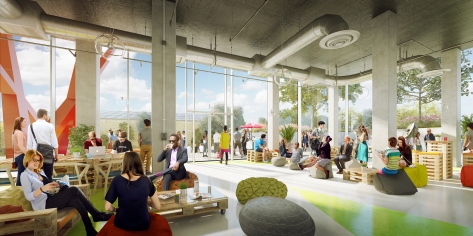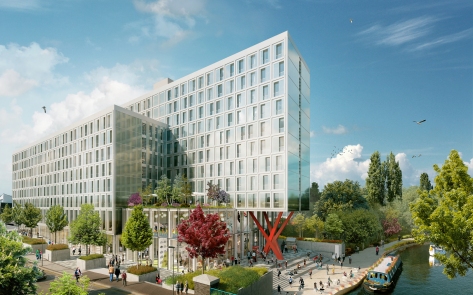Over the last couple of years the term “Private Rented Sector” (or PRS) within the Residential sector has become a buzz phrase in the property industry. In fact PRS is a wide-ranging term; it covers any residential dwelling, new or old, which is landlord owned and tenant occupied. The new hot topic or sub-sector which is emerging is actually called “Build to Rent”; this is about building specifically for the rental market on scale and operating properly managed developments long-term.
From recent experiences, it seems clear to me that there is still a lot of uncertainty/ confusion about what Build to Rent is really all about within the industry. Furthermore it’s important for the wider public/ occupier market to understand what this is and how its different.
Build to Rent is a totally different offering within the residential sector; it’s set to grow exponentially in the coming years and will potentially disrupt other existing rental models in the sector.
What is Build to Rent? The traditional rental market is predicated on a landlord and tenant basis. Generally each dwelling is owned by an individual and rented by another individual. Often a third party management company will remotely deal with rent payment and any maintenance issues. This could be in the context of a typical suburban house or an apartment within a larger urban block. The rental cost is owner driven and tenants gamble with what the quality of the environment is like, how well they are dealt with in terms of any problems with the property and who the neighbours are; these could be owner occupiers or other renters.
Build to Rent is based on a single ownership of an entire low density housing community, or at the other end of spectrum, an entire large scale urban apartment block. It is a branded and fully managed development with a range of communal internal and external facilities which allow residents to engage/ socialise. The buildings are designed specifically for the rental market and considered fully from a long-term lifecycle perspective in terms of planned, reactive and preventative maintenance.
This approach to residential property is something quite new and unique in the UK, whereas this model exists and is both successful and popular in America and other parts of Europe. Whilst the Government are now trying to promote long-term home ownership, the demand statistics and lifestyles of our population suggest a different trend. Home ownership has reduced by over 5% in the last 15 years, whereas rental occupation has increased by 10% in the same period. A lot of this is centred around affordability, flexibility and choice. (Figures source: Savills, Census 2011). People can’t afford a mortgage until later and want to be more mobile, especially younger occupiers.
Who are the renters? In England and Wales rental properties are occupied by the following groups;
- 18% families
- 17% Sharers (including Students)
- 17% DINKY’s (Dual income, no kids yet)
- 33% Singles
- 15% Other
(Figures source: Savills, Census 2011).
Interestingly from my perspective, this new generation of housing is something that has already been tried, tested and is hugely successful in the UK. This is privately built/ operated student living developments. Student Living has evolved substantially and become recognised as an independent asset class now. The quality of new student living developments is generally very good. The same principles and lessons learnt in this sector have very close synergies with the growing Built to Rent sector. Build to Rent isn’t a brave new world, its proven in the UK with Student Living and its proven in other global residential markets on mass scale. The UK mainstream residential market is simply catching up.
So what will these developments look like? The first generation of Build to Rent developments we are seeing are good quality; they need to be for a number of reasons. These homes need to stand the test of time to be financially viable. This is no longer the developer model of ‘build it cheap and sell it fast’, the success of these developments is defined by the quality of the buildings, the environments they create and the way they are operated and managed. People will have a choice and, as with Student Living developments, occupancy levels of whole buildings will be really important to ensure the assets maintain their value and generate a profitable return.
Who will own these housing developments? Traditional development is based on an equity and bank debt funding model in the main, with sales of all dwellings on completion. In a rental context this means larger urban developments have fragmented ownership and can lead to many complex problems, especially when the buildings get older and more maintenance is required.
Build to Rent is based on a similar upfront funding model, and/ or complete institutional funding by private business funds or pension funds. The long term ownership will reside with a single fund; one source of ownership and accountability, with a dedicated branded management platform to control and protect the asset – and residents of course.
The shared amenity facilities within developments can be wide ranging; think of a hotel type offer with laundry services, leisure facilities, communal gardens/ open spaces, lounges, games rooms, cinema rooms, food and beverage offers, workspaces and more. What is included will be dependent on location, existing services in the locale and viability. However the driver is to create a customer led experience where people will want to live.
This format of development arguably offers the greatest potential to create and achieve successful placemaking strategies; to form a strong sense of character, identity and community for residents. Build to Rent within high density urban locations will be an opportunity to create proper city communities; this is something I don’t think exists now.
So that’s a brief summary of Build to Rent. It’s here, it’s happening now and I think we will see much more of it in the near future.
Our business is involved in a wide range of Build to Rent schemes at present, mostlof which are urban high density developments. One which is attracting a lot of interest is with The Collective at Old Oak. This project is a niche ‘co-living’ development which is targeted at young professionals. More to follow shortly on Old Oak; it’s an unheard of location in London which is set to change substantially.




